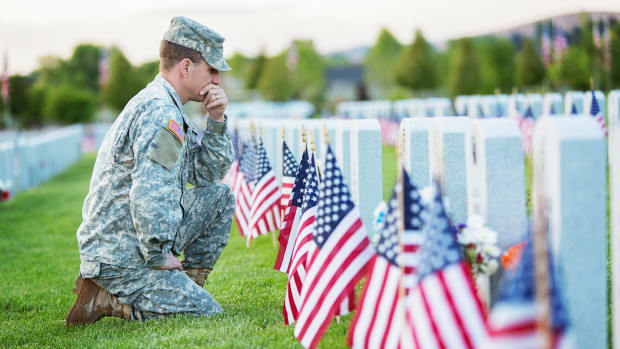Census officials say that Americans will honor more than 1 million fallen heroes on Memorial Day 2021 (Photo courtesy of the Museum of Military History).
LOGAN – Everybody knows that Memorial Day is a national holiday to honor those who died in service to our country.
But who knows how many heroes we’re actually remembering on that occasion?
The U.S. Census Bureau does.
Census officials say that more than one million men and women have died in our military services in the 160 years since the start of the Civil War.
This national day of remembrance was originally called Decoration Day when it was proclaimed in 1868 to honor slain Union and Confederate soldiers. After World War I, the observance was expanded to salute all Americans who died in our wars.
Memorial Day did not become an official national holiday until 1971, however.
The American Presidency Project celebrated that occasion with a proclamation that read in part: “It is a simple matter to make war and a difficult matter to make a peace … Confirmed in this truth, we know that our concern in America must be to move hand in hand with men of all nations to make the world safe for humanity.
“In this manner we can insure that those who died for us did not die in vain, that out of war has come redemption and out of the search for redemption has come a true and just and lasting peace.”
Of all the wars in the past two centuries, the Civil War was the most costly in terms of U.S. lives since everyone killed on both sides of that conflict was American. The combined enlistment totals for the Union and Confederate armies was about 3.3 million volunteers and conscripts. While no accurate records of casualties were maintained, historians estimate that more than 500,000 soldiers were killed in battles between 1861 and 1865.
During the brief and mostly one-sided Spanish-American War of 1998, about 300,000 Americans served in the U.S. Army, Navy and Marine Corps. Of that number, about 2,500 were killed.
About 4.7 million Americans joined the Army, Navy and Marine Corps during World War I. The Department of Defense lists fatalities during that conflict as about 116,000. Ironically, more Americans succumbed to Spanish Flu in stateside training camps than fell to enemy fire on the battlefields in France.
During World War II, about 16 million men and women served in the U.S. military and about 400,000 made the ultimate sacrifice.
After five years of uneasy peace, Americans were again at war in Korea from 1950 to 1953. While a total of 5.7 million men and women served during that conflict, only 1.8 million saw combat against North Korean and Chinese troops. Of that number, about 36,000 were killed in combat and another nearly 18,000 died from accidents, illness and other causes.
During the Vietnam Era, the U.S. military establishment rose to 8.7 million men and women in our armed services. Approximately 3.4 million of them deployed to Southeast Asia on a rotational basis between 1964 and 1975. The U.S. suffered about 58,000 combat casualties during that period and another 32,000 losses to accidents, illness and other causes.
In 1990, the U.S. led an international coalition to expel Iraqi invaders from Kuwait. The Pentagon deployed about 700,000 soldiers, sailors, Marines and airmen to the Middle East for that conflict. Fewer than 400 combat casualties were recorded during what has been described as the most decisive military campaign in U.S. history.
During the military campaigns that followed the terrorist attack on the World Trade Center on Sept. 11, 2001, about 2.5 million active duty, reserve and National Guard service members deployed to Iraq and Afghanistan. About 16,000 fatal casualties resulted during those protracted conflicts.
Census officials acknowledge, however, that their estimate of the number of U.S. fallen heroes does not include casualties suffered during the Indian Wars on the American frontier in the late 19th Century, the Philippine insurrection that followed the Spanish-American War and the so-called Banana Wars fought in Central American and the Caribbean islands in the early 20th Century.

